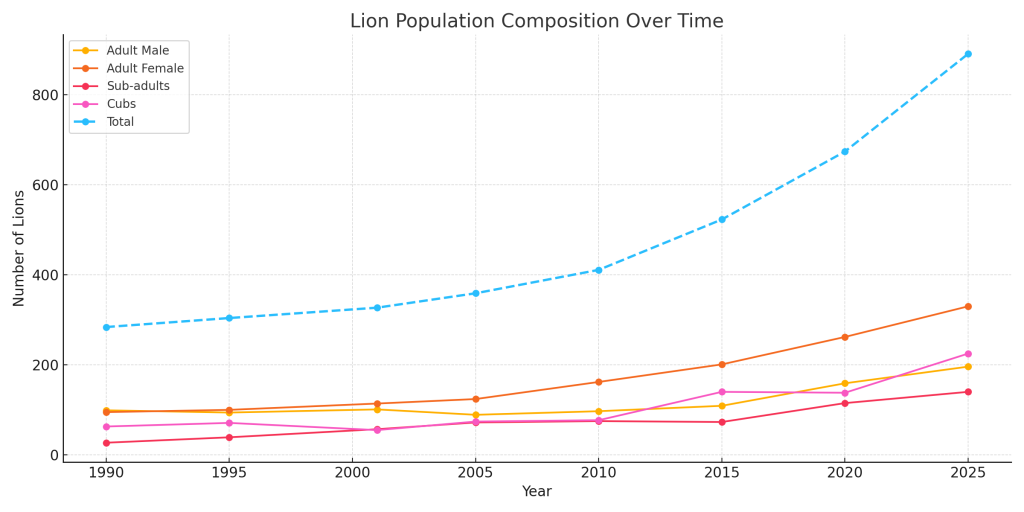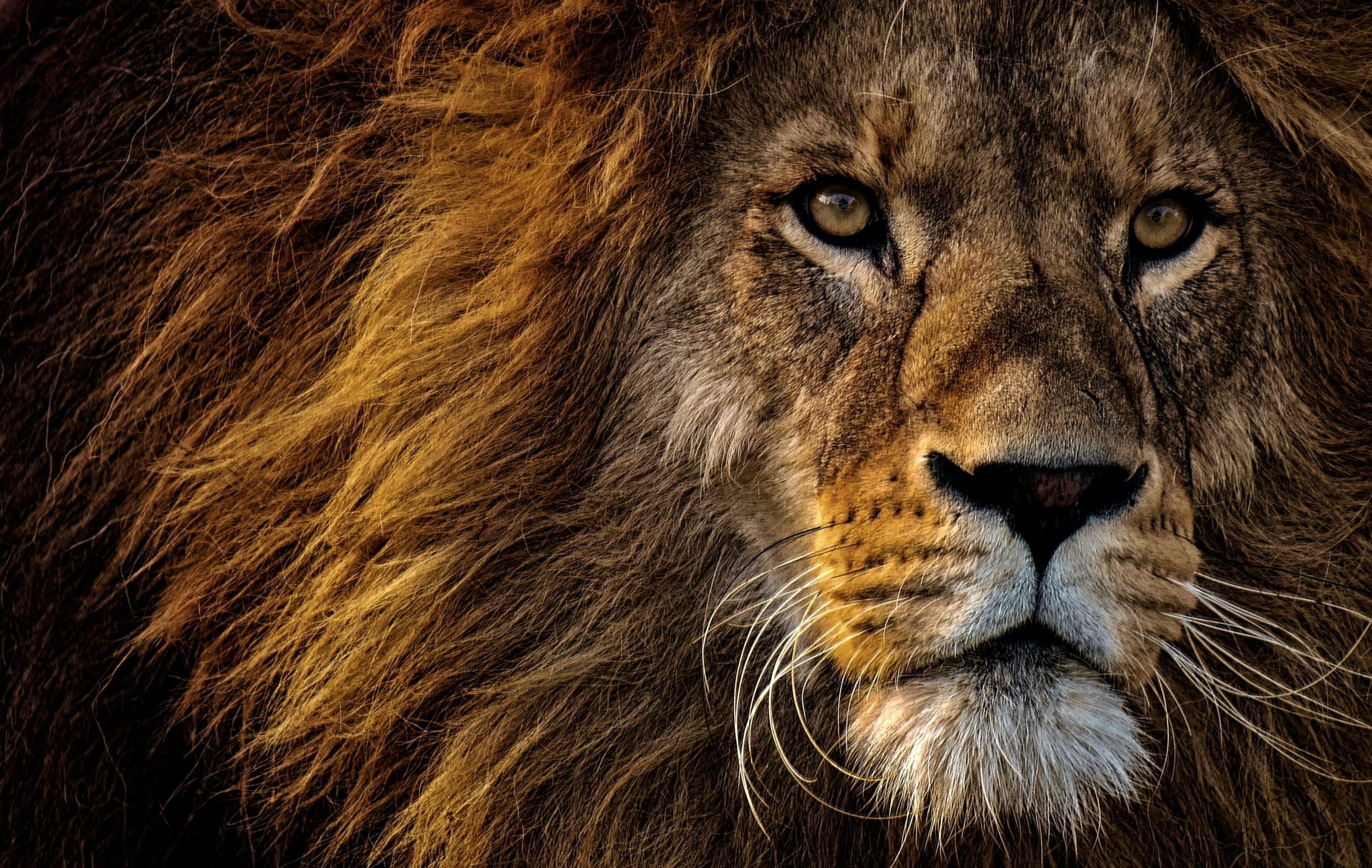The current situation for wild lions Pt1: the number of lions
The current situation for wild lions is not optimistic. I gathered much information from official websites for analysis.
- The estimated number of lions:
Determining the exact population of lions is quite challenging due to insufficient research and investigation. Biologists make reasoned estimates based on the available data, which can result in figures that may not be entirely accurate. In reality, the true number of lions in the wild could be even lower than the estimated values.
According to ICBU [1], the estimated number of subadult and adult lions is between 22000 and 25000 in Africa and about 670 in India. While this statistic does not account for lion cubs, it underscores the urgency and importance of lion conservation efforts. The exclusion of cubs from the count is due to their high mortality rates and the inherent instability, which limits their ecological relevance in understanding the overall status of lion conservation.
Again based on the data from ICBU, between 2006 and 2018, the Lion population in Africa was estimated to have declined by 25% over 12 years from 33,292 to 25,105. Based on the data from Where have all the lions gone? Establishing realistic baselines to assess decline and recovery of African lions[2], the total lion population of lions have declined by about 75% since 1975, from a baseline population of 92054 (83,017–101,094 95% CI) in the 1970s to the current population. Recent research [3] from Panthera’s Lion Director and Oxford University’s Wildlife Conservation Research Unit estimates the global lion population was as large as 200,000 in 1900.
The decline of the African lion population has been particularly pronounced in Western and Central Africa, where there has been a staggering 90% decrease since 1970. In contrast, the Eastern and Southern regions of Africa have seen more moderate declines of 44% and 55%, respectively. Again based on the information from Where have all the lions gone? Establishing realistic baselines to assess decline and recovery of African lions. This may be the result of the establishment and proper management of those renowned natural reserves: the Serengeti National Park, for instance.
What is fortunate is that the population of Asiatic lions is showing a rising trend. According to a website called Big Cats India [4], the number of Asiatic lions has risen from 284 individuals in 1990 to 891 individuals in 2025 (including cubs). As for the specific data for lions from different ages, I drew a graph below for better representation.

Fig.1 Asiatic lion population over time
In conclusion, the current situation for wild lions is not optimistic. African lions experienced a dramatic decline in population size in the last 5 decades. Although the number of Asiatic lions presents a rising trend, local environmentalists and ecologists should keep working for the proper preservation of the trend. More conservative actions should be taken in the African regions.
Reference:
[1] ICPU Red List, https://www.iucnredlist.org/species/15951/266696959#population
[2] Loveridge, A.J., Sousa, L.L., Cushman, S., Kaszta, Ż. and Macdonald, D.W. (2022). Where have all the lions gone? Establishing realistic baselines to assess decline and recovery of African lions. Diversity and Distributions, 28(11), pp.2388–2402. doi:https://doi.org/10.1111/ddi.13637.
[3] Panthera. (n.d.). Lion. [online] Available at: https://panthera.org/cat/lion.
[4]Patel, Krunal. “Lion Census 2025 – Lion Population in India.” Big Cats India – Customised Tiger Safari in India, 30 May 2025, bigcatsindia.com/lion-census-2025/. Accessed 6 July 2025.

太好了是新文章我们有救了
Interesting read! It’s amazing how card games like those at world of solitaire can sharpen focus – a key skill at any table, really. Simple, accessible fun!